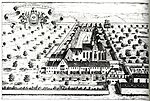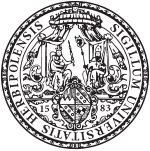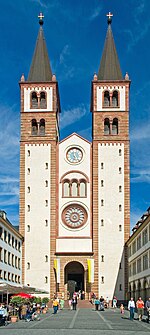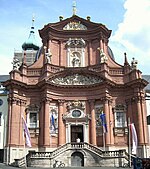Würzburg Residence

The Würzburg Residence (German: Würzburger Residenz) is a palace in Würzburg, Germany. Johann Lukas von Hildebrandt and Maximilian von Welsch, representatives of the Austrian/South German Baroque style, were involved in the construction, as well as Robert de Cotte and Germain Boffrand, who were followers of the French Style. Balthasar Neumann, court architect of the Bishop of Würzburg, was the principal architect of the Residence, which was commissioned by the Prince-Bishop of Würzburg Johann Philipp Franz von Schönborn and his brother Friedrich Carl von Schönborn in 1720, and completed in 1744. The Venetian painter Giovanni Battista Tiepolo, assisted by his son, Domenico, painted frescoes in the building. Interiors considered masterworks of Baroque/Rococo or Neoclassical architecture and art include the grand staircase, the chapel, and the Imperial Hall. The building was reportedly called the "largest parsonage in Europe" by Napoleon.: 52 It was heavily damaged by Allied bombing during World War II, and restoration has been in progress since 1945. Since 1981, the Residence has been a UNESCO World Heritage Site in recognition of its outstanding Baroque art, design, and architecture.
Excerpt from the Wikipedia article Würzburg Residence (License: CC BY-SA 3.0, Authors, Images).Würzburg Residence
Residenzplatz, Würzburg Würzburg Altstadt
Geographical coordinates (GPS) Address Website External links Nearby Places Show on map
Geographical coordinates (GPS)
| Latitude | Longitude |
|---|---|
| N 49.792777777778 ° | E 9.9386111111111 ° |
Address
Residenz Würzburg (Würzburger Residenz)
Residenzplatz 2
97070 Würzburg, Würzburg Altstadt
Bavaria, Germany
Open on Google Maps










